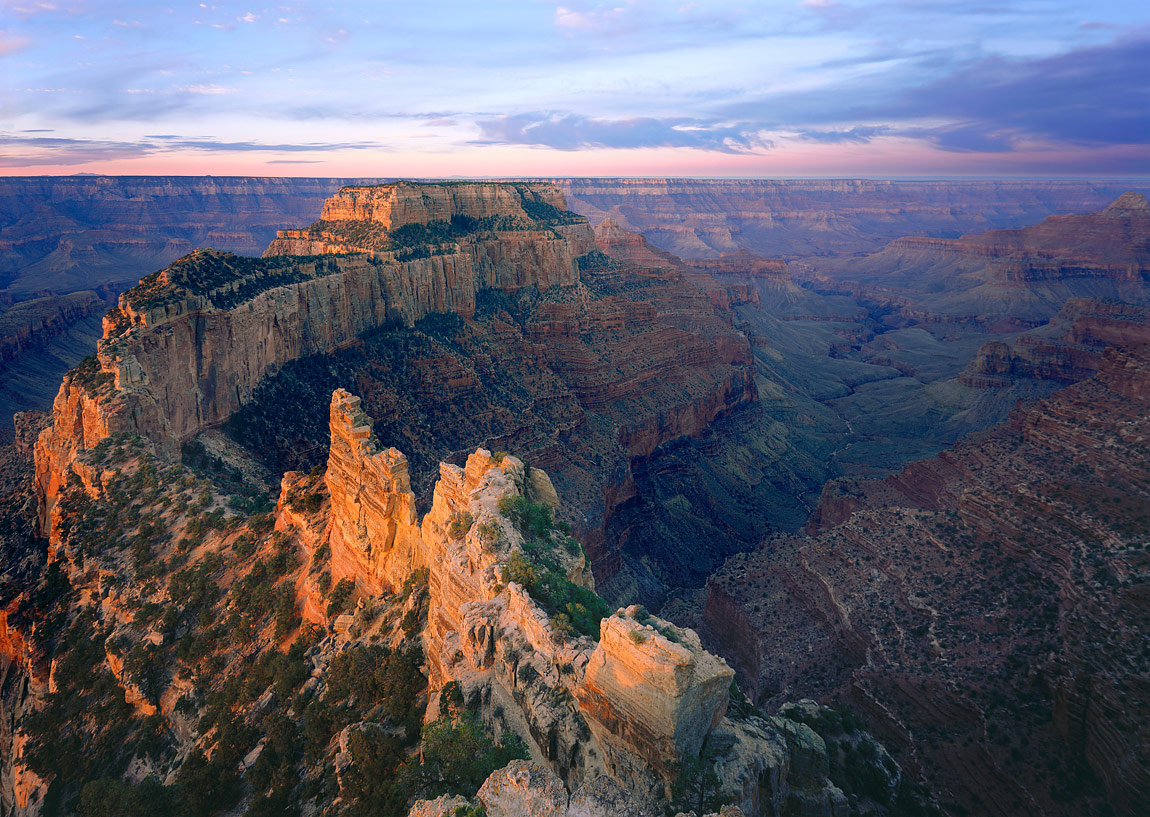The Grand Canyon is more than a national park, and people from most countries have seen pictures of it. Visited by more than 5 million people per year, it is one of the most photographed landscapes on earth. The immense chasm inspires awe but also humility for those attempting to capture its grandeur. Components for great landscape photographs abound. You will find varied colors created by the rock strata that encompass more than 2 billion years or one-third of Earth’s age. You will find deep perspectives created by the receding features of a canyon 277 miles long (the longest in North America) and 18 miles wide. The depth of the canyon, over one mile, means a great variety of vegetation, from aspens to desert plants and perspectives. When you set up your tripod on the rim, you will be walking into a rich tradition that includes most of America’s great landscape photographers. Stephen Trimble’s ‘Lasting Light: 125 Years of Grand Canyon Photography’ is an excellent survey of their work. Yet, the multilayered character of the Grand Canyon and the variations in light mean plenty of opportunities to find your own vision.
Orientation
The South Rim has two entrances linked by a 30-mile road punctuated by a large number of named overlooks, all of which offer easily accessible precipitous views. The North Rim is almost a different park. Although only 10 miles away as the condor flies, the entrance to the North Rim is ...


